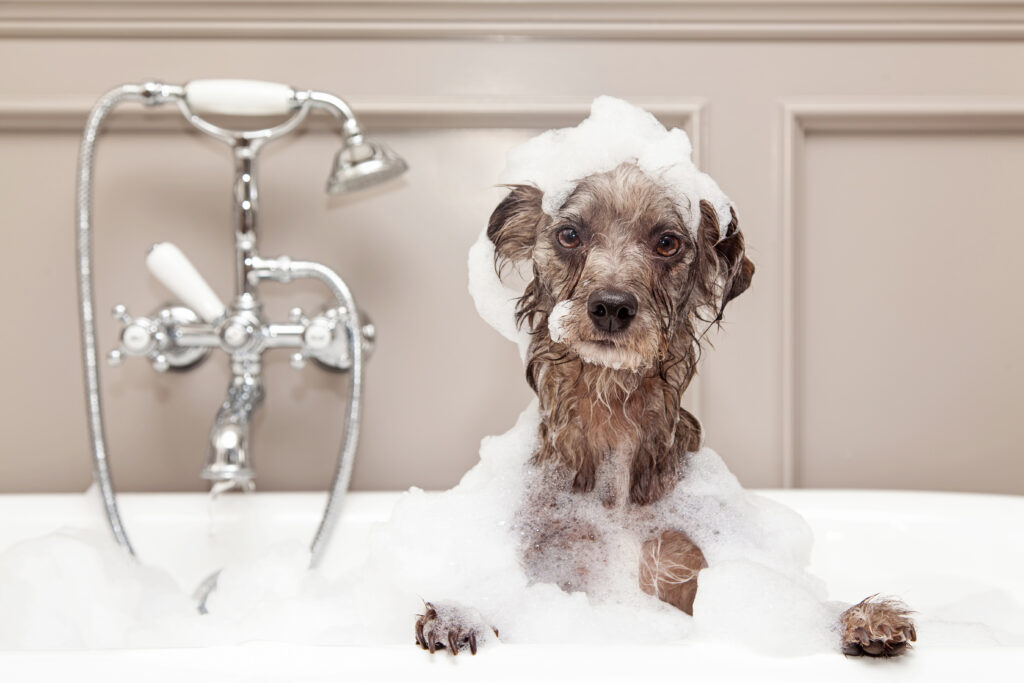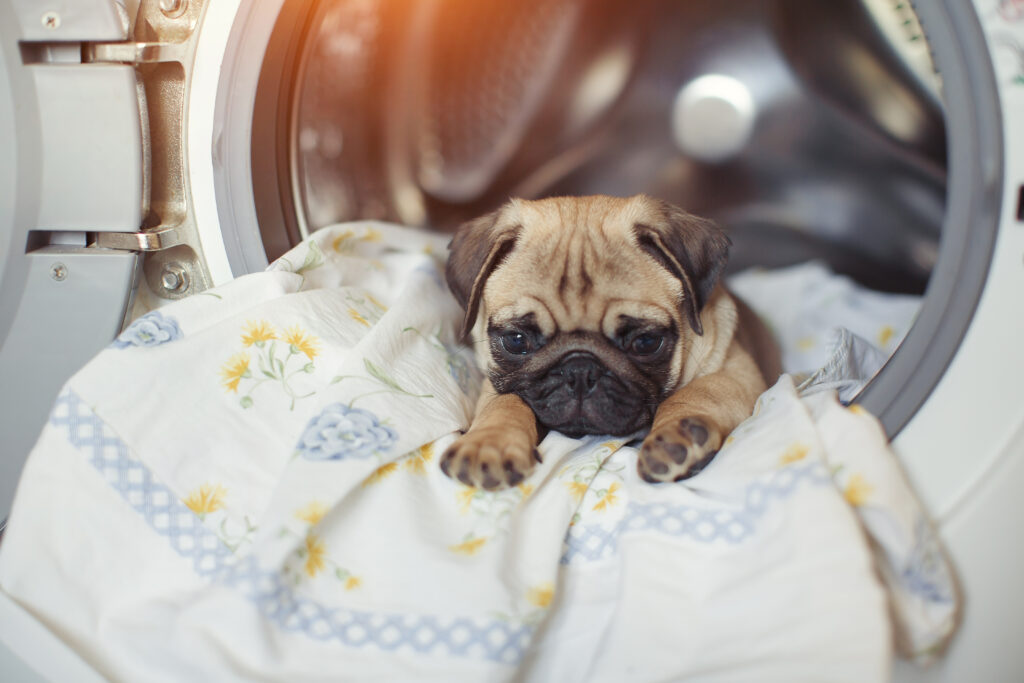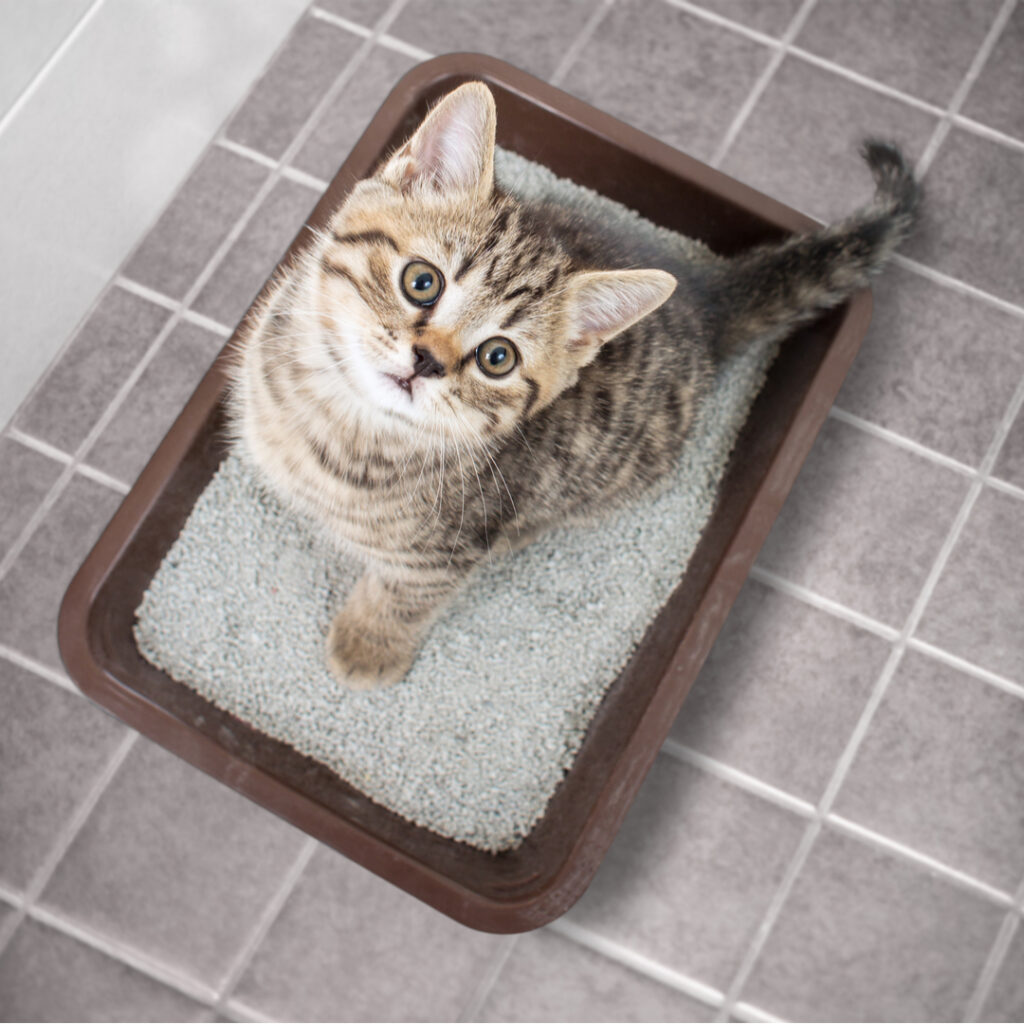Pet Bathing and Washing Guidelines
Keeping your pet and its bedding, bowls, and bathroom area are some of the most important but often overlooked duties of dog care and cat care. We are here to share how often you should bathe your pet and wash its gear so that you can develop healthy habits to keep your pet and home clean and healthy.
How Often Should I Bathe My Dog?
A healthy adult dog: A good rule of thumb is to give your pet a bath once a month in the tub or shower, using warm water and a gentle dog-specific shampoo. If they have an underlying skin condition, pests such as fleas, or allergies, you may need to bathe them more often using a medicated shampoo prescribed by your vet.

How To Wash My Dog’s Bed
Machine Washable Dog Beds
Ideally, your dog bed should be a machine washable dog bed. Most beds have a cover which is easily washable and then the inner cushion that potentially (depending on size) may be too large for your washing machine. The perfect scenario is that the whole bed can be washed. You are more likely to wash the cover more than the cushion.
Washing Dog Bed Cushions
If you cannot wash the cushion, then inserting a plastic bag or lining between the cover and cushion will provide some protection. When machine washing, do so at the highest temperature possible (follow manufacturers guidelines). Then tumble dry (if recommended for your dog bed) or hang dry.
Handwashing Non-Machine Washable Dog Beds
If your dog bed isn’t machine washable then use warm water and detergent ensuring all of the detergent is dissolved before adding your dog’s bedding. Give the dog bed a good rub until completely clean and then apply at least two rinses before drying.
Other Tips For Washing A Dog Bed
In between washes a vacuum of your dogs’ bed is recommended to collect any loose hair/dirt. It’s also, best to use a natural detergent where possible and something gentle if your dog has sensitive skin. You can also use some form of stain remover before washing if there is really ground in stains on your dog bed.
Your dog will be grateful for a nice clean bed and you will help prevent any potential bacteria/parasites spreading around your house!

How Often Should I Wash My Dog’s Bed?
The general consensus is that your dogs’ bed should be washed once a week and twice a week if any of the factors above are present. Use your common sense, if your dogs bed smells then wash it. Likewise, if your dog has been on a particularly dirty walk and transferred that dirt to its bed then wash it.
Factors Determining How Often to Wash Your Dogs’ Bed:
- Activities your dog has taken part in, i.e. if it has rolled in fox poo and then transferred this onto its dog bed then it needs washing!
- Allergies your dog may have, the more allergies then the more often you should wash your dogs’ bed.
- Allergies you or your family has will mean potentially increasing washes of your dogs’ bed.
- How much your dog sheds hair, more hair potentially more washes.
How To Wash Pet Dishes and Toys
Food and Water Dishes Should be Washed Daily. If your dog eats dry food, bowls should be washed once per day, after the final meal of the night. For dogs that consume wet or raw food, it is necessary to wash and sanitize the bowls after every meal.
Even cleaning one toy per week can significantly reduce the number of bacteria sneaking their way back into your home. Because these toys get a little extra dirty, you may need to soak them a bit longer or scrub them a bit rougher to get them clean.
How Often Should You Clean a Litter Box?
Typically, cat parents wash the box once a week. You can use dish soap and warm water or vinegar and water to clean the box. Don’t use traditional bleach since it can interact with the ammonia in cat urine. Regular washing and waste removal will prevent the plastic material of your litter box from absorbing cat odors. That means you won’t have to replace a litter box nearly as early if you clean it often.

How Often Should You Wash Your Pet’s Collar?
Weekly in the dishwasher or in the washing machine. Collars are pretty gross because they live on your pet’s skin. Make sure you have a spare collar with an ID tag for when you’re washing. The last thing you need is your pet escaping without his or her collar!
Keeping your pet’s dishes, litterbox, toys, and bedding clean and dry is an important pet care routine that you should adopt today! A clean pet makes for a clean home and a healthy and happy pet!
About the Author:
Savanna Westwood
Savanna Westwood is the Owner and Founder of The Savvy Sitter, Pet Sitting and Dog Walking, LLC. She has grown up with animals all her life and enjoys spending time with them. Savanna has lived in the Winter Garden and Windermere Area for over 30 years. When she is not taking care of Fur Friends, one can find her reading, practicing archery, riding, and devising ways to provide additional and excellent services to clients. Savanna is a Certified Professional Pet Sitter with Pet Sitter International's CPPS certification and also holds certification in Pet First Aid and CPCR for Pet-Care Professionals.

